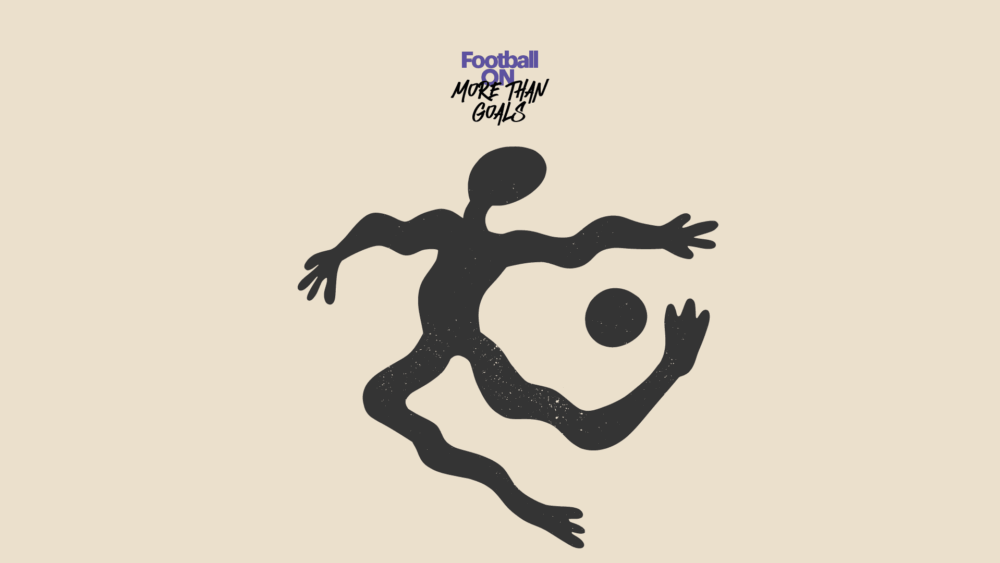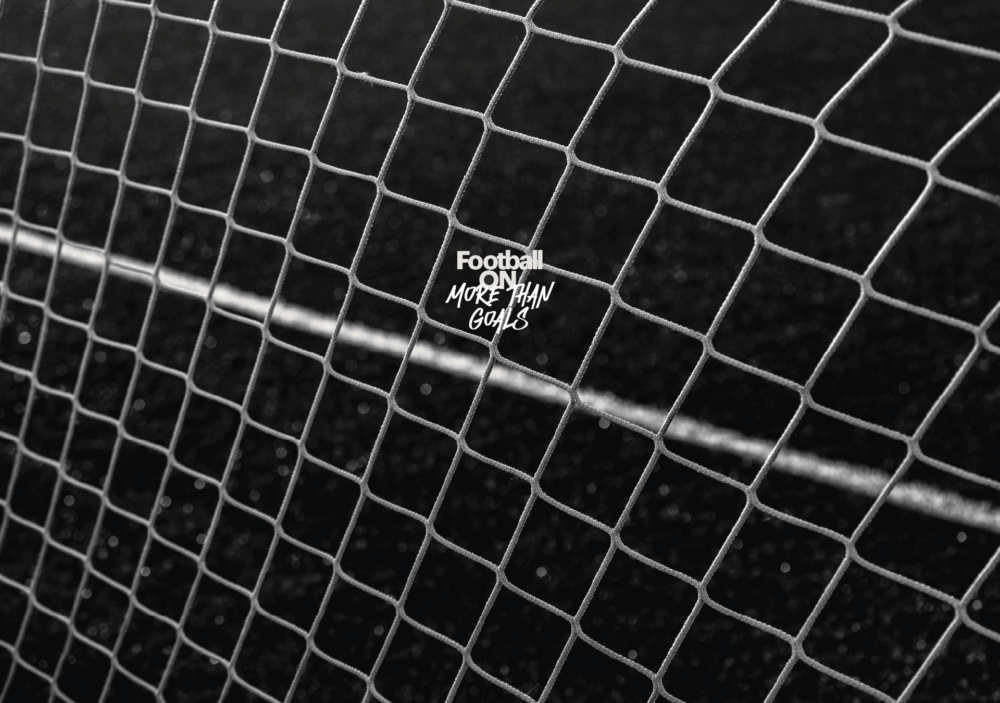
Christopher Hylland: “Only through football do Argentines feel they can win”
Christopher Hylland is a writer with an emphasis on football and travel literature in South America. He has lived in Buenos Aires for several years, has visited dozens of stadiums in the country, and has groundhopping in stadiums in Brazil, Peru and Colombia. He participates in the ETERON project FootballON: More Than Goals, talking about fan culture in Argentina, the development of football in the country along with its parallel historical and social development, as well as the challenges facing Argentine football under the presidency of Javier Milei.
How did fan culture emerge and develop in Argentina, taking into account the historical and social developments in the country? What is your personal experience from your many years of residence and travels in Buenos Aires during these years?
If we want to put a historical context, we can start from 1860 when a mass migration from Europe to Argentina began. That year, 180,000 residents lived in Buenos Aires and within 50 years the population increased to 1.5 million. The migratory flows came from many countries, mainly from Spain and Italy, essentially building the Argentine capital. In 1930, its population was now 3 million in the metropolitan center and many times more in the wider region of the city.
In 1867, the first football game was played in Buenos Aires, gradually each immigrant community acquired its own team and the core of each neighborhood gathered on the stadium. Along with football, social life also developed, with many parallel activities as the city grew. Especially from the 1920s and 1930s, football experienced a significant boom, many players were looking for a better future, Mussolini in Italy wanted to build a strong team and, despite being a fascist and with an anti-immigration policy, he gave the “green light” for second and third generation Argentines, the so-called oriundi, to come and play for the Italian national team.
Over the decades, what one holds, among other things, is that the social fabric of Buenos Aires is quite homogenized, although there are a lot of people from Eastern and Southern Europe, from the Middle East, many Jews and Arabs as well. All communities in Buenos Aires maintain close ties within themselves, they coexist culturally, and here we could say that within such an environment, due to temperament, conflicts and disputes concern small differences that are also reflected on the field.
How are they reflected on the field?
Each team represents a neighborhood, there is a lot of pride, social pride, and intense localism even from neighborhood to neighborhood, and the feuds can peak before the local derbies.
Also, these differences concern the different generations, people have been watching football since the first post-war decades and still go to the stadium. The way they celebrate is different, they dance and retain elements from the past. In a city like this, in a city as big as Buenos Aires, you can see everything and it is certain that as soon as you set foot there you feel the feeling that something different is happening here with football. For me, my personal love and relationship with Argentina and its football began in 2009, on my first trip here and since then, for the next 15-16 years, I have been coming and going.
Tell us about the barra bravas in Argentina, the corresponding ultras, and the relationship they have with the club management, their role in the stadium and the neighborhood, their form of organization in general.
The ultras movement or hooligans in Europe are different from the barra bravas in Argentina. The hooligans, as is the case in England for example, have a much greater need to drink and fight, they have no political affiliation, while in Argentina they are more connected to the team, they have a relationship on another level.
Of course, to be honest, they also constitute a form of mafia, very tied to the neighborhood and the team, they travel regularly to away games, while when the guests come to home games there is a very high tension and a dense police presence in the neighborhood and around the stadium. They have a close relationship with the team, their management covers their travel to away games and they are gaining more and more power, demanding more. We could say that they are a body of mercenaries, with many of them having a true love for the team and the players. There are factions within the barra bravas, there are cliques that sometimes fight each other. Many times they sell tickets for the games at outrageously high prices, mainly to those who are not related to the team and do not regularly go to the stadium, sometimes they are also involved in various strange “jobs”, selling protection, etc.
What do you think of the Superclásico between Boca Juniors and River Plate? It is a match that is a showcase for Argentine football, one of the top derbies in the world, but beyond that, what else can we say?
Boca fans have a reputation for coming from the working class, from the neighborhood of the same name that was once one of the poorest neighborhoods in Buenos Aires, and River fans are said to come from the middle and upper classes, with the team being called los millonarios, the “millionaires”, a nickname that arose from the disproportionately large sums of money that the team’s management spent in the 1920s to sign players, amounts that were unthinkable at the time.
However, it is not true that some come from the working class and others from the middle and upper classes. The fans of both teams come from different social classes, the fan movement is overall stratified in terms of its social references. What is important to emphasize is that the conflict and rivalry between the two sides does not have class references, but is a reflection, a projection of the broader political issues and the many and great economic difficulties that affect Argentine society. The people in Argentina have a feeling that they are wronged, that they are constantly wronged. They feel defeated, there is poverty, corruption, police repression, governments fail to fulfill their commitments and of course the loser in the case is the people, the citizens. These tensions and denials cultivate violence, but at the same time, this feeling of constant defeat can only be overturned on the field, only through the game, where the fans and football fans feel that they can win, that they have the opportunity to win. There are many teams in Buenos Aires and in Argentina as a whole, but Boca and River enjoy the greatest support because they are winners, because their fans can and do win through them, because they can be on the side of the winners.
Along with the superclásico, of course, there is also the Rosario derby, the clásico rosarino, between Rosario Central and Newell’s Old Boys, an even more intense derby, another great football rivalry, a match full of passion in a city that is truly divided in two.
Ball and spectacle through the screen, ball through platforms like Netflix or Amazon Prime and the Discovery Channel, which show games. Has this development affected football in Argentina and if so, in what way?
The development of digital platforms has changed the data and has given people much greater access to games and events outside Argentina, but also to many documentaries about world football. This trend has been constantly strengthening since 2013 and after, when Netflix in particular became very popular in the country, it also contributed to the globalization of the sport, forcing Argentines of all ages to watch documentaries and films directly in English without dubbing, something completely unprecedented. European football is also coming to Argentina, you see guys walking around the streets of Buenos Aires wearing English team uniforms, many see players and coaches who work for European teams, a new connection is being cultivated, while recently you have also seen many appearances by Lionel Messi, the pink outfits of Inter Miami.
Since you brought Lionel Messi into the discussion, what is society’s image of him? Does the comparison with Maradona about who is the “god of Argentine football” continue?
There is always that. There are two worlds: Maradona, the expressive, passionate, intense character, divisive, outspoken, and on the other hand Messi, prudent and measured, with a softer tone. However, there has been a shift in society: The image of Messi before and after winning the World Cup in Qatar in 2022 is different. Winning the trophy changed Messi’s position in the collective consciousness, he became completely accepted and is now on the same level as Maradona in the eyes of Argentines.
What threat do you see for the country’s football? Does anything worry you since you have been following it closely for years?
Yes. One of the biggest threats is the fact that now the focus is on Europe and not so much on the development of domestic football. Also, there is a visible risk that Argentine football will change, the way it is managed, the management of clubs, the way the president is elected, after the law promoted by the government of President Javier Milei to privatize the sport. This development gives the “green light” to clubs to sell their shares to foreign funds, to multinationals that have nothing to do with football, just to bring money to the sport, to commercialize it completely. This is a new, dangerous situation that is progressing and will only do harm to the sport itself and to the relationship between fans and their teams. Let’s see how all this goes in the coming period.




